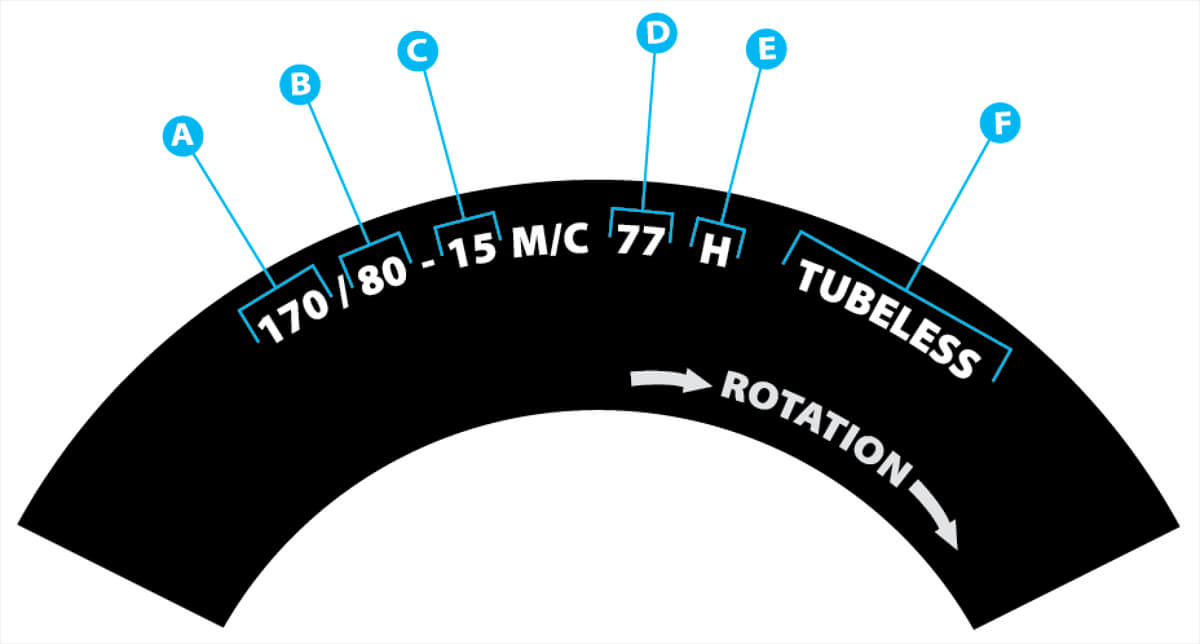

Next to the load index there is a letter. If you replace your tires and the new ones have a lower load index, the tire has a high likelihood of bubbling and eventually blowing out. For example, if your current load index is 103, a tire of the same size with a load index of 112 would work for you, but not a tire of the same size with a load index of 94. If you are replacing your tires, they have to be the same or higher load index, never lower. The higher the number, the greater the load carrying capability of the tire. This is the number relative to the weight capacity of the tire. Next to your tire size you will see a number and letter combination like 94H. The tire letter meaning refers to the construction of the tire: R for radial, D for diagonal, and RF for run-flat. The last number, 15, is the rim diameter of the wheel that the tire will fit. The bigger the aspect ratio, the larger the sidewall of the tire. The second number, 65, is the aspect ratio, which means that the height of the tire is 65% of the tire's width for this example. The 205 on the tire means it is 205 millimeters wide looking at the tire head on. The first number measures the width and it looks something like this: . Where to find tire sizeĮvery tire has 3 numbers that mean a specific size:

What do all the numbers and symbols mean? Here is a guide to understanding tire size meaning. Search for your vehicle by make, year, model and trim and we deliver the right tires for your vehicle. The Tire Agent database does this for you.
#UNDERSTAND TIRE SIZE PLUS#
Each number and symbol has specific meanings, and plus there are other key elements you should know about your tires! Tires have several numbers and symbols on the sidewall, and they can be a little mysterious if you don't know their meaning.


 0 kommentar(er)
0 kommentar(er)
